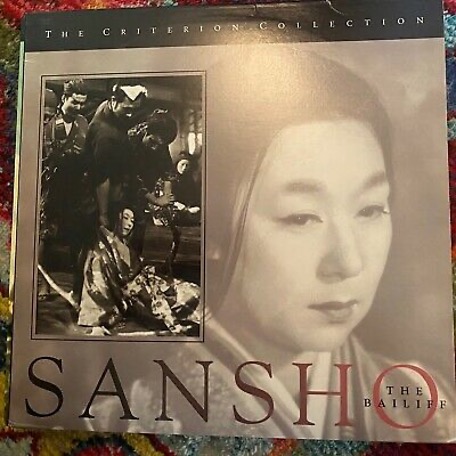A few years ago, Daniel Morgan mentioned a long-time hidden treasure for cinephiles to Ben Ruder (Film Studies Center Manager, Film and Technical Operations). That treasure was a 1991 commentary track done by Tom Gunning for the Criterion Collection laserdisc of Sansho the Bailiff (Kenji Mizoguchi, 1954). Laserdiscs were used as an audio-visual storage medium during a very small window of time; they debuted in 1978 but failed to take off due to their high cost. At 12 inches in diameter, they were also quite large and were quickly replaced when the more compact DVD came out in the late 1990s. These legacy media are now part of film archives, like the Film Studies Center, or floating around on eBay. So, when Morgan told Ruder about Gunning’s commentary track, Ruder took to eBay and bought a Sansho the Bailiff laserdisc for $15. With a laserdisc player from his home studio, he was able to transfer this niche format, which is both analog and digital, into a digital file. “The audio of the transfer is fantastic quality—it’s pretty cool to hear a 1991 Tom Gunning voice. In the commentary track,” Ruder explains, “Tom’s talking about the history of the legends that are the genesis of this film, which I found fascinating. He also describes how camera movements and scene placements are used in the film, and makes comparisons to earlier and later films that were influenced by Mizoguchi. But he let the story speak for itself, too.”
The Criterion laserdisc features beautiful art on the front, and on the back, there is a long description of the story and credits that include Gunning. It looks a lot like an LP album cover, especially because laserdiscs and LP vinyl records are same size. Ruder describes the laserdisc as “a hybrid between a CD and a record,” as it’s an optical disc just like a CD; many laserdisc players can also play CDs. “In the early 1990s,” Ruder says, “I was very excited about film and had laserdiscs. I sought them out because of their higher image and audio quality at the time.”
The Film Studies Center still has hundreds of laserdiscs in its collection, because the format often included unique materials that future releases on more advanced formats did not. “They’re all in a back room, and in six years there’s been one request for a laserdisc,” Ruder says. “But we can set up a laserdisc player and someone can look at one just for the novelty of it.” Ruder, who collects legacy media and equipment, has a few laserdisc players in his studio, so he was prepared when Morgan mentioned the Tom Gunning commentary track. When Ruder made a digital video file of the laserdisc, he had to figure out how to isolate the audio. “Audio works in such a different way than DVD or video files, where we select one track. The laserdisc has both digital and analog tracks,” Ruder explains. “The laserdisc of Sansho the Bailiff was also encoded on two discs, so four sides had to be copied.” The third side of the disc contains only 20 minutes of the movie and then all of the bonus materials. There are two video items, and then everything else is still images, of stories related to Sansho the Bailiff that a viewer has to advance manually, page by page.
Ruder was partially inspired to create the transfer during a conversation he had with current PhD candidate, Cooper Long. This past winter, Ruder and Long talked about the laserdisc as a physical medium that current PhD students aren’t likely to have seen in person. Contemporary audiences also miss out on laserdisc bonus material that was not transferred to DVDs or Blu-rays. Ruder remarks: “If you see Sansho the Bailiff in a course, that’s all you see—not bonus features like the commentary track, short making-of documentaries, or director interviews. And these are the hundreds of things that make physical media special.” CMS is grateful to Ruder for preserving this gem of CMS film studies history, and a testament to the astounding scope and intellectual generosity of Tom Gunning.
—
For those interested in hearing Tom Gunning’s commentary along with the film, please visit this page.

Leave a Reply